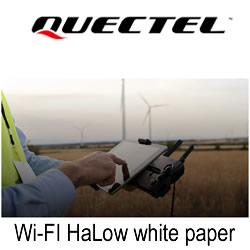Agrology Unveils the First-to-Market Low-Cost Nitrous Flux Sensor for Agriculture
The Agrology Nitrous Flux Sensor delivers a groundbreaking solution, enabling farmers to measure and report climate-smart practices for verified greenhouse gas (GHG) reductions at scale
Agrology today launched the first real-time, in-field nitrous oxide (N₂O) flux sensor, breaking new ground for climate-smart agriculture. This technology advances efforts by farmers, academics and supply chain partners who are seeking scalable solutions to accurately measure nitrous oxide and other GHG emissions at scale in commercial agriculture. Currently undergoing rigorous in-field validation with experts and partners, the Agrology Nitrous Flux Sensor is available in limited quantities, with a commercial release slated for early 2025.
The agricultural sector recognizes its role in N₂O emissions and has sought ways to mitigate them. However, reducing N₂O emissions and achieving accurate impact quantification have been challenging due to the lack of affordable measurement tools. This gap has forced farmers and supply chains to rely on estimated emissions factors. Agrology's new sensor solves this problem at a fraction of the cost of research-grade equipment.
Adam Koeppel, Co-Founder and CEO of Agrology, highlighted the challenge and opportunity: "Accurately measuring N₂O emissions at scale has been a significant barrier, limiting the adoption of practices that reduce greenhouse gas emissions. Our Nitrous Flux Sensor changes that by enabling precise nitrogen application without compromising yield, empowering growers to implement agricultural practices that lower emissions effectively."
The launch of Agrology's Nitrous Flux Sensor addresses the critical challenge of nitrogen fertilizer management. Fertilizer applied at the wrong time, location, concentration, or in the wrong form not only releases N₂O but also causes water pollution and biodiversity loss. With Agrology's sensors, growers can measure and verify the impact of climate-smart nitrogen management strategies. These tools, combined with nitrogen reduction programs, support insetting initiatives by providing in-situ data that transparently quantify emission reductions. Growers can benefit from incentives beyond fertilizer savings, further encouraging sustainable practices.
Agrology's innovation demonstrates the practicality and necessity of climate-smart practices and N₂O reduction, paving the way for large-scale agricultural climate mitigation.
Key features of the Agrology Nitrous Flux Sensor include:
High Accuracy: Comparable to expensive laboratory-grade equipment, the sensor provides precise real-time N₂O measurements across multiple locations.
Transformative Potential: The sensor revolutionizes measurement, monitoring, reporting, and verification (MMRV), reducing dependency on models and estimated emissions factors.
Enhanced Assessment: Farmers and partners can accurately evaluate the emissions impacts of various farming practices and products alongside cost and yield, enabling better decisions at scale.
Empowerment Through Data: Growers can adjust farming practices based on real-time data and report progress on emissions reductions, fostering continuous improvement.
Affordability and Accessibility: Priced for average farmers, the sensors can be deployed across diverse crop types, production systems, and regions, supporting in-field GHG monitoring at scale.
Broad Implications: Access to real-time, high-resolution N₂O data across various systems and practices will expand research and enhance understanding of climate-smart agriculture.
Dr. Michael Schuppenhauer, Principal Investigator and Affiliate at Lawrence Berkeley National Lab, has tested the Agrology Nitrous Flux Sensor for 18 months in commercial row crops. His research compared the sensor against cavity ringdown spectrometers and ground-truth nitrous oxide eddy flux sensors. The Agrology system achieved an R² value >0.8 for N₂O when compared to measurements from research-grade sensors, demonstrating comparable performance at a fraction of the cost. Full results are detailed in the Agrology Gas Measurement Cross-Validation White Paper.
"Nitrous oxide is the white elephant in agricultural GHG emissions. Affordable, real-time emissions data is essential for growers to see the impact of their sustainable practices," said Dr. Michael Schuppenhauer. "Agrology's Nitrous Flux Sensor is a paradigm shift in sustainable agriculture as it provides any grower with an affordable, accurate, and continuous tool to measure, reduce, and monitor nitrous oxide emissions, and thus enables GHG reductions and innovations at the source while replacing static factors and rigid, non-conforming models."
The release of the Agrology Nitrous Oxide Sensor comes one year after the company introduced the Arbiter, the first system that continuously monitors and quantifies carbon flux and soil respiration for commercial farmers. The Arbiter provides data on soil health, the carbon cycle, water cycles, and microclimates, accessible through mobile and desktop apps. Agrology's Nitrous Flux Sensor will integrate into the Arbiter, with the combined release scheduled for early 2025. More information can be found at agrology.ag/nitrous-oxide.
About Agrology
Agrology is a leading agricultural technology company, a National Science Foundation award recipient, and a Public Benefit Corporation dedicated to providing real-time data that helps growers directly measure the ecological and agronomic impacts of their regenerative farming practices and microclimate. Agrology monitors soil health, microbial activity, the carbon cycle, nitrous oxide emissions and a comprehensive agronomic dataset, empowering growers to monitor and predict growing conditions, as well as measure and link regenerative or sustainable practices to ground-truth GHG reductions and ecological impacts. Trusted by top growers, researchers, and global CPG brands, Agrology has offices in Alexandria, Virginia, and Salinas, California. Discover more at Agrology.ag
Featured Product

